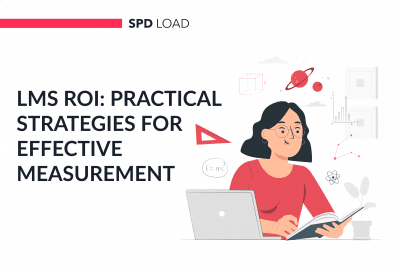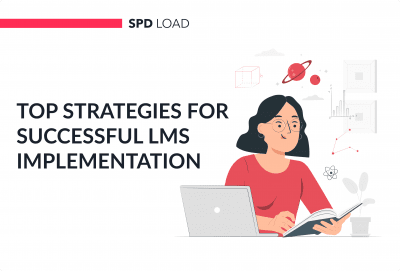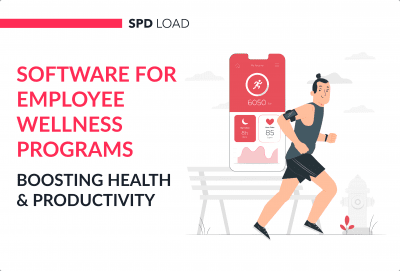Top 10 Startup Trends of 2025 (and Beyond)
- Updated: Nov 08, 2024
- 9 min
Thousands of entrepreneurs are gearing up to launch startups in 2025.
They’re entering a world filled with uncertainty. We’re still making sense of the lessons from the COVID-19 pandemic that upended life as we knew it three years ago.
The traditional 9-to-5 office model is giving way to more flexible work arrangements. And leadership styles are evolving with the times.
At the same time, the world feels unpredictable. Economic instability abounds, yet exciting developments in technology continue apace.
So, how can a fledgling startup find its footing in 2025? Examining startup trends can help chart the course.
In this article, we’ll explore some of the key trends, technologies, and techniques that startups should have on their radar for the coming year.
Still looking for that breakthrough concept? Check out ways to find an idea for a unicorn startup.
Unlock your startup potential now — start transforming your vision into a scalable solution with our expert developers today!
1. Generative AI Takes Off
Digital acceleration as a whole has been a big trend over the past few years. 2025 will be no different in that respect.
One way that startups will do this is through generative AI.
‘Generative AI’ is a broad umbrella term that covers a lot. At its most simple, it refers to unsupervised machine learning algorithms. These algorithms create (‘generate’) new things using what they have learned.
For example, a generative coding AI might generate code. This code will get more complex and sophisticated as the AI ‘learns’. This ability could be used to fix bugs and improve features in apps.
There are dangers with generative AI. It’s sometimes linked to things like deep fakes and false news stories. But, when it’s used right, it has a lot of useful applications:
- Generative AI is great for automating the dull, repetitive work of digital creation, including tasks like edit images, audio files, and even assisting in AI presentations, delivering crisp, clear results. This kind of work is laborious and boring for human engineers, but a generative AI finds it easy. Generative AI can create undetectable AI text and visual content.
- Generative AI can create models for testing at speed. These are useful for everything from weather forecasting to audience research.
- An AI writer can come up with content ideas for blogs, social media posts, and more. However, it’s worth using a plagiarism checker to ensure that the generated content is original.
- Generative AI can produce digital prototypes very fast. This speeds up R&D.
- Generative AI can work as a background removal.
2. NFTs Gain Traction
NFTs (Non Fungible Tokens) are getting more and more popular. Arts and crafts startups are using them to generate quick cash and build their customer base.
An NFT is an original digital item. Usually, NFTs are artworks or digital designs, but they can be anything. When someone buys an NFT, they become the owner of something completely unique. This is very appealing to some customers.
NFTs help startups to scale in several ways:
- Free NFTs are a great loss leader. They’re not expensive to produce and mint, but they do give great value to the customer. So, by giving out free NFTs, brands can bring in new customers and build a community.
- NFTs are quick and easy to mint. So, selling NFTs can be a quick way of boosting profits.
- NFTs help brands to showcase their creativity. They’re a great way to get your stuff out there and make money at the same time.
Brands can also use NFTs as fun alternatives to tickets when throwing events, but it’s important to know how to create an NFT marketplace. This gives the attendee something unique to keep after the event is over.
3. Tapping Into the Internet of Things
The Internet of Things is about more than interactive fridges. It allows everything from your heating system to your bicycle to become a data portal.
The IoT has been reaching critical mass for some years now. In 2025, it will be more wide-reaching and accessible than ever before.
At heart, IoT devices are communication gateways. Every communication gateway is another opportunity to build relationships with customers. But, startups should be careful. Consumers won’t be happy if their fridge starts piping up with random brand adverts.
If you are going to use the IoT for marketing and communications, give the customer control. Otherwise, you could come across as a pushy and intrusive brand. And that’s the last thing you want when you’re trying to build brand/customer relations.
Startups can also use the IoT to boost business processes. Things like smart trackers help with office management. Intelligent security features can alert you to potential break ins. Card readers for small business can send transaction data straight to your CRM. You could even use the IoT to send instructions to production machines or integrate IoT technology to enhance GPS fleet tracking devices to transmit and collect data remotely.
With cybersecurity risks on the rise, bot attack prevention has become essential for online security.
4. Outsourcing Cybersecurity
Outsourcing to cloud-based services has been a business trend for the last few years (learn more about what is IT outsourcing in our recent article).
In 2025, CSaaS (Cybersecurity as a Service) is set to be huge.
Cybersecurity is very, very important. Cybercrime is on the rise, and it’s getting more sophisticated by the day. It’s thought that cybercrime will cost the global economy $10.5 trillion every year by 2025.
At the same time, the penalties for cyberattacks are getting more serious. Legislation like the GDPR and the CCPA crack down hard on brands that fail to protect customer data. Under the GDPR, companies can get fined up to 4% of their entire annual turnover for data breaches.
So, it’s vital that brands are on top of cybersecurity. One of the best ways to do this is to outsource cybersecurity to experts.
Cloud-based cybersecurity companies have a lot of advantages for startups:
- They provide high-level expertise at an affordable price. Many startups don’t have the resources to hire a talented in-house cybersecurity team. By outsourcing, they get the expertise they need at a price they can afford.
- They give round the clock service. CSaaS teams can dedicate their entire jobs to protecting their clients’ systems. So, brands can dedicate themselves to customers without having to worry about cybersecurity.
- They have the most sophisticated security tech available. Top cybersecurity systems are expensive to own. By hiring a CSaaS company, startups can get the benefit of high-end tech without the upfront costs. If you’re entering the SaaS world, these best SaaS startup ideas are worth exploring.
5. Values-Driven Entrepreneurship
It’s no secret that the modern consumer has a conscience. Millennials are the most ethical consumer group to date. And Generation Z and Alpha promise to outdo even Millennials in conscious consumerism.
To attract these conscious consumers, startups need to practice conscious entrepreneurship. Brands no longer can just set up a property and eart from it, but they need to work hard to mitigate the ethical impacts of their actions.
What does conscious entrepreneurship look like? Well, it’s no single thing. It involves an all-encompassing effort to be ethical in every action (and even thought!)
Here are some practical ways to practice conscious entrepreneurship:
- Taking active steps to protect the environment. Using sustainable materials, keeping your carbon footprint low, etc.
- Promoting compassionate leadership. I.e. treating employees with humanity and respect, building an open and supportive culture, etc.
- Giving back through charity and conservation work.
- Making sure that your chain is ethical. For example, don’t work with suppliers who exploit their workers or the environment. Don’t let less ethical brands advertise on your platform. And don’t partner with a brand whose ethics don’t match your own.
6. VR Goes Mainstream
Immersive consumer experiences are the future of B2C. And VR is the future of immersive experience.
Companies are already using VR to sell products through the internet. It’s very popular in retail. Here are some examples:
Ikea
Furniture companies like IKEA use VR and AR to give customers virtual tours of showrooms.
This is a lot more effective than showing a picture in an online catalogue. With VR, customers can ‘walk’ around the product and get a proper feel for its shape and dimensions.
Tommy Hilfiger and H&M
Fashion retailers like Tommy Hilfiger and H&M use virtual showrooms.
These replicate the real-life fashion shopping experience, but with crucial differences. A virtual showroom is never crowded. The assistants are never distracted. Everyone knows your name, and everyone has time for you.
VR gives clothes shoppers an immersive, personalised, and fulfilling experience. 
Engineers
Engineering and construction brands can use VR to give safe demonstrations. For example, it can be expensive and even unsafe to build and show full working prototypes.
But building a digital prototype and showing it in VR is a great alternative. By using VR, companies can put products through their paces at low cost and in safety.
7. Hybrid and Remote Work Models
Pandemic working conditions opened the world’s eyes to the potential of remote working. Having seen what is possible, employees are reluctant to go back to the office 9-5.
Adopting a hybrid/remote working policy can be very good for business. Especially if you are a small business. It saves on overheads, as you don’t need so much office space and don’t have to pay for employee travel.
For example, website design can be done remotely.
You don’t have to pay for employee parking, or for office space, or utility overheads. The costs just of running an office quickly add up!
Hybrid working also improves employee satisfaction and even productivity. But do remember that people work in different ways.
While some employees love being completely remote, others will prefer the hybrid approach.
Then there’s the fact that remote technology gives you access to people all over the world. Recruiting is no longer about persuading talent to move within office-commuting distance. Instead, you have access to the best talent the world can offer.
Need a remote team to support your project? Check out our guide on how to hire a dedicated remote team for top results.
8. Startups Invest in Leadership Development
The pandemic revealed a lot of uncomfortable truths about society. One of them was that managers and CEOs are often not all they could be. Moving to remote work was often chaotic.
Since 2020, the world’s working population has gone from 7% remote to 16% remote and 40% hybrid. It’s a massive change, and it can benefit startups if done well.
Managers floundered with no physical space to manage. CEOs struggled to connect with the needs of employees. The result was a disorganised, inflexible mess.
Companies that thrived in the pandemic had something in common: great leadership. Their leaders and managers were both flexible and organised.
They were prepared to listen to employees, and acted on what they heard. They knew the value of employee fulfilment, and they lead by example.
We all hope that a situation like the pandemic won’t happen again. But leadership skills are useful for more than global pandemics. Effective leadership can see a startup through its bumpy first steps and to scale fast.
So, investing in leadership skills at all levels of management is important. Startups that want to survive, thrive, and scale, should develop great leaders.
Crafting Custom Mobile Apps That Delight Users!
9. Streamlining Operations to Boost Efficiency
A major startup trend of 2023 was using AI to boost employee satisfaction. This looks set to continue into 2025.
AI is great for taking away mundane, repetitive tasks. This frees up time for employees to work on more fulfilling work. It streamlines workflows and improves employee satisfaction.
Taking away time-consuming drudgery also reduces the risk of burnout.
On a similar note, remote working cuts down a lot of unnecessary commute time. This allows workers to focus on work without the stress and distraction of commuting.
All in all, work is getting purged of extraneous extras. No more mundane, repetitive tasks. No more unnecessary commuting. Even meetings are being revolutionised by remote communications technology.
This means that jobs are more streamlined, more focused, and more fulfilling.
10. Climate Tech Takes Off
Startups focused on developing innovative technologies to address climate change and promote sustainability gain significant traction and investment in 2025.
From alternative energy to carbon capture to IoT monitoring solutions, climate tech spans industries and leverages emerging breakthroughs in areas like AI, nanotechnology, and clean materials.
With increased support from both private and public sectors, climate tech promises to transform how we power our world while presenting new opportunities for eco-conscious entrepreneurs.
Key areas to watch include renewable energy storage, carbon removal tech, climate change risk modeling, and precision agriculture.
Building a startup is challenging but rewarding. This guide shows how to start a startup from scratch.
Ready to Build Your Own Startup?
The startup trends we’ve explored reveal a world of exciting possibilities in 2025, even amidst uncertainty.
For any startup, keeping a finger on the pulse of these IT trends can provide an edge. But equally important is finding the right development partner to turn ideas into reality.
That’s where SpdLoad comes in.
Our experienced team helps startups build minimum viable products to validate and launch ideas quickly and cost-effectively.
Whether you need a web or mobile app, IoT software, VR game, healthcare startup, or help integrate any other trends highlighted, we move fast without sacrificing quality.
Let’s discuss how we can help you build a forward-thinking startup that can impact the world.
Check out our insights on custom software development cost that cover what drives prices and how to manage expenses.













